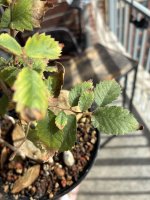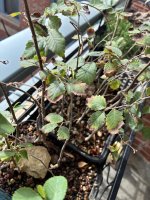aneesto
Seedling
- Messages
- 7
- Reaction score
- 2
Please please please help - my zelkovas got affected by this starting in july/august. thought it was high heat and humidity due to zone 7a/b location and therefore fungus. But october has passed and the weather has cooled off and the browning has progressed. When browning started first i used Bonide pesticide thinking its fungus and i cut off the browning parts. that was 6 weeks ago. and since then this is how much (A LOT) browning continued to occur. This gotta be fungus and i just need to apply the bonide product every say 10 days several times? And do i remove all the leaves? Although these guys were near a chinese elm corkbark that got affected by gnats or something and lost some leaves.
They are outside in full sun on a windy balcony in a high rise building.






They are outside in full sun on a windy balcony in a high rise building.








